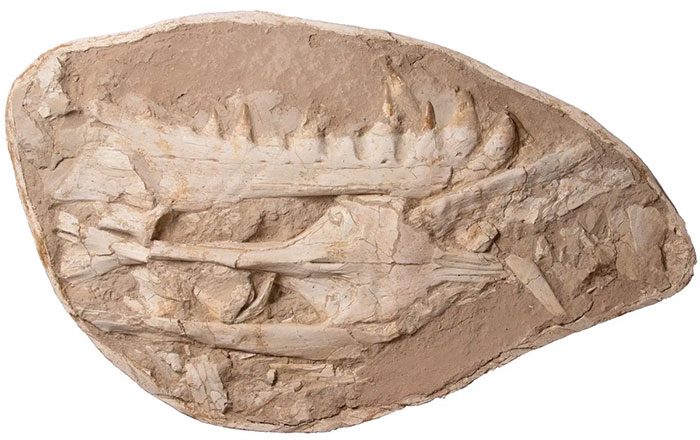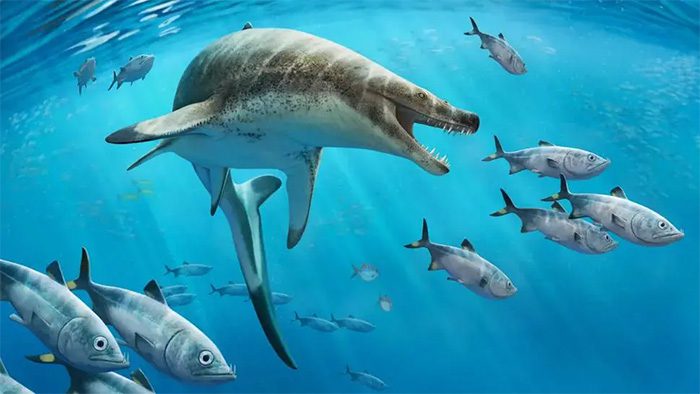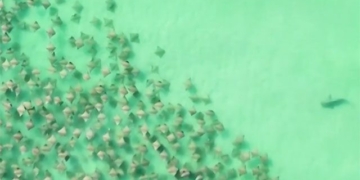Imagine a creature resembling an orca, with teeth like daggers; this marine reptile from the Cretaceous period once terrorized the region around modern-day Casablanca, Morocco.
According to Live Science, an international research team has added a new species to the list of terrifying marine reptiles from the Cretaceous: Khinjaria acuta.
The name is derived from “khinja” in Arabic, meaning “dagger”; as well as “acuta” in Latin, which means “sharp.” This aptly describes the creature’s jaw: filled with large, dagger-like teeth.

Part of the jaw of the creature excavated – (Photo: BATH UNIVERSITY).
Meanwhile, paleontologists from the University of Bath (UK), one of the participating research groups, have referred to it as a “nightmare” marine reptile.
Not only does it possess a grotesque jaw, but this creature also had a massive body measuring 8 meters long, quite stout like a Komodo dragon – one of its living relatives – while its size and agility were comparable to that of an orca.

The “nightmare” marine reptile Khinjaria acuta.
The skull and part of the skeleton of this “nightmare” marine reptile were found in a phosphate mine near the port city of Casablanca, Morocco.
According to Professor Nour-Eddine Jalil from the National Museum of Natural History in Paris (France), a co-author of the study, analysis of the skull reveals that this species had a terrifying bite force.
Dr. Nick Longrich from the University of Bath stated that it posed a threat to fish, sea turtles, and even other marine reptiles of its time.
Khinjaria acuta has also been identified as a species of mosasaur. In addition to the Komodo dragon, it is also a relative of another modern species, the giant anaconda.
The specimen recently excavated dates back 66 million years, right at the end of the Cretaceous period, just before the Chicxulub asteroid impact catastrophe, which led to the extinction of this species along with all mosasaurs, ichthyosaurs, pterosaurs, and other dinosaurs on the planet.
However, scientists believe that this species may have dominated the oceans throughout the Cretaceous period, which spans back 145 million years.
This new discovery enriches the description of mosasaurs, which were among the top dangerous marine reptiles of the past, larger than most other marine animals. They also exhibited significant morphological diversity, with varying tooth shapes and predatory strategies among different species.




















































